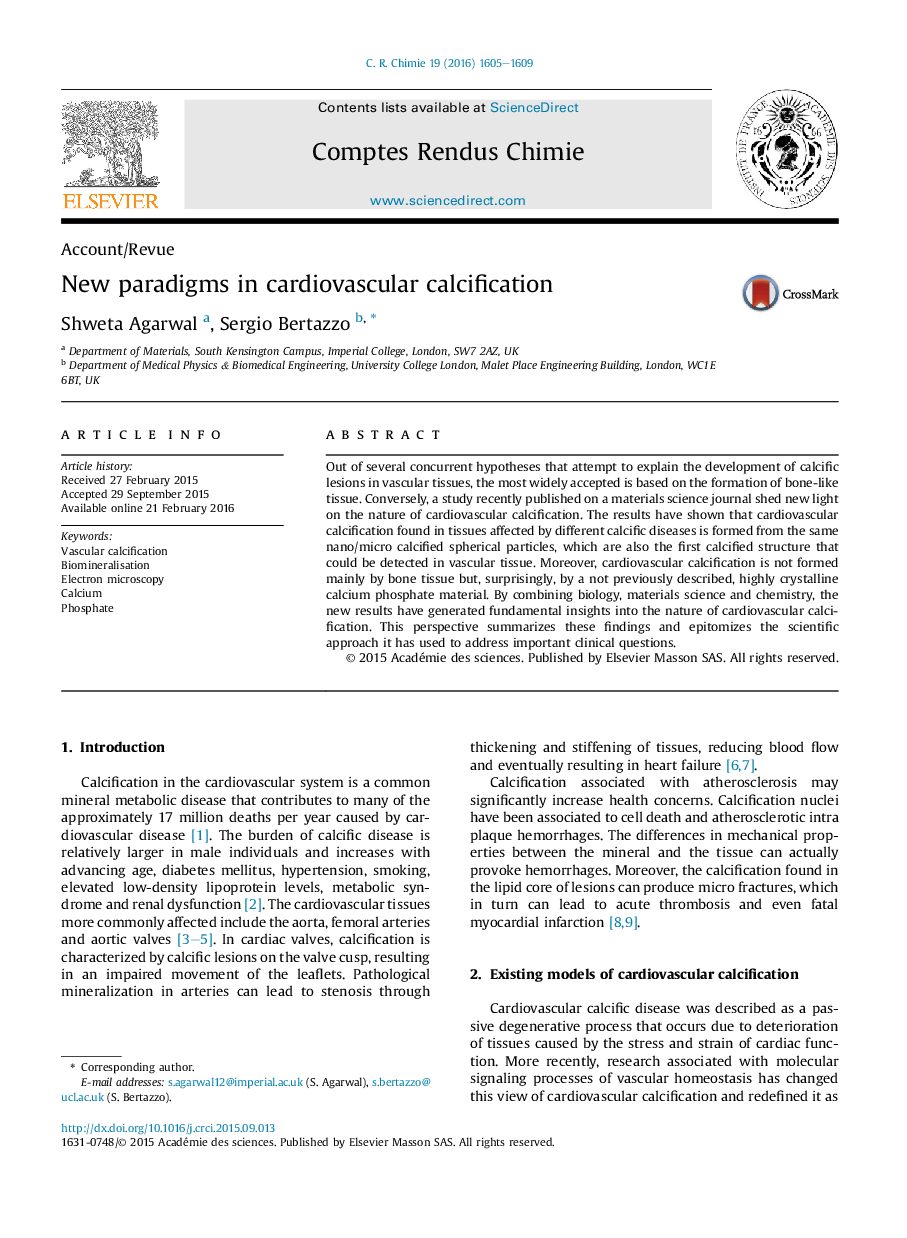| Article ID | Journal | Published Year | Pages | File Type |
|---|---|---|---|---|
| 6468974 | Comptes Rendus Chimie | 2016 | 5 Pages |
Out of several concurrent hypotheses that attempt to explain the development of calcific lesions in vascular tissues, the most widely accepted is based on the formation of bone-like tissue. Conversely, a study recently published on a materials science journal shed new light on the nature of cardiovascular calcification. The results have shown that cardiovascular calcification found in tissues affected by different calcific diseases is formed from the same nano/micro calcified spherical particles, which are also the first calcified structure that could be detected in vascular tissue. Moreover, cardiovascular calcification is not formed mainly by bone tissue but, surprisingly, by a not previously described, highly crystalline calcium phosphate material. By combining biology, materials science and chemistry, the new results have generated fundamental insights into the nature of cardiovascular calcification. This perspective summarizes these findings and epitomizes the scientific approach it has used to address important clinical questions.
